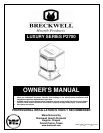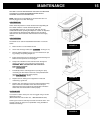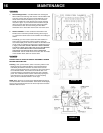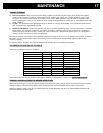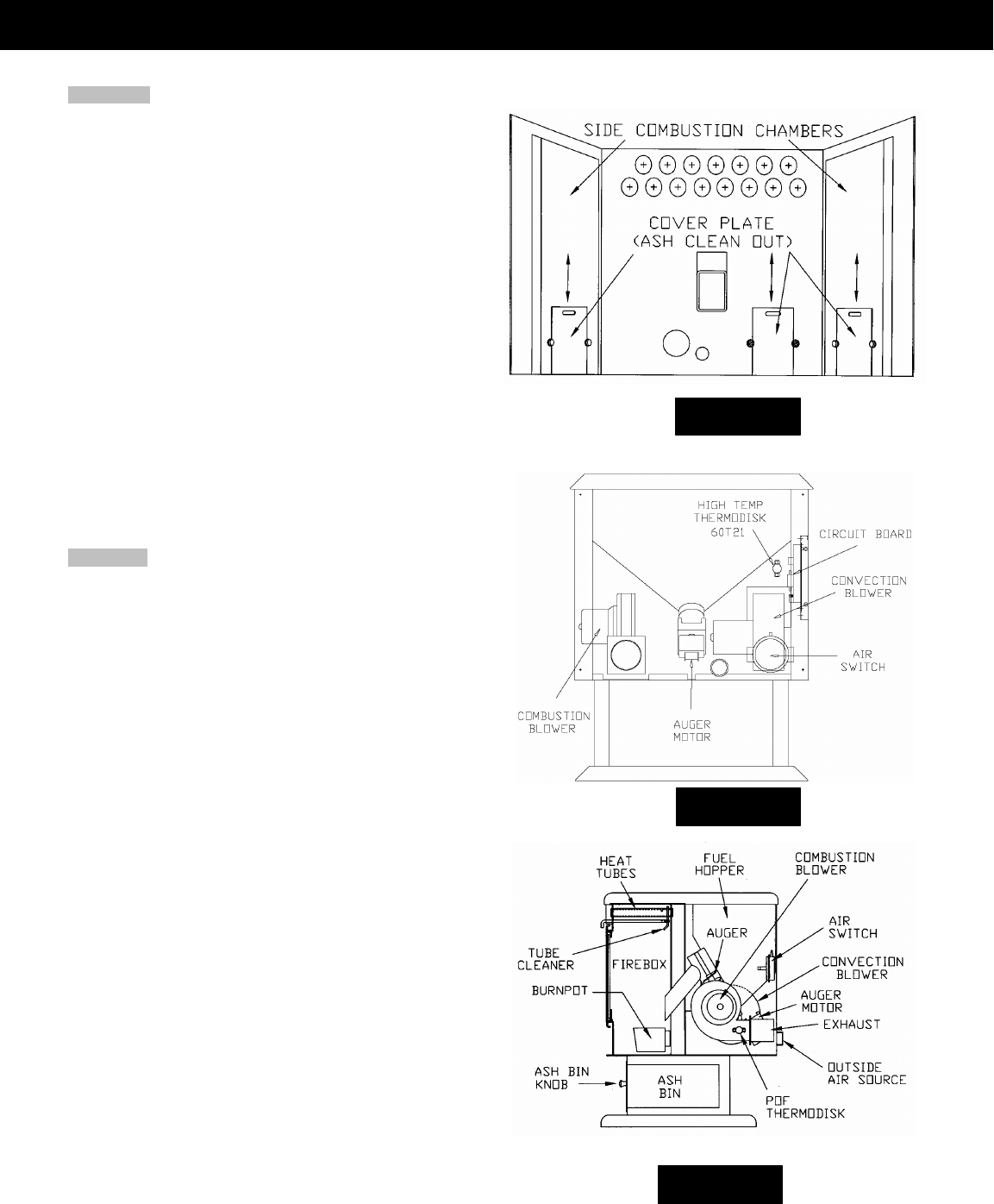
CLEANING
a. Heat Exchange Tubes – Your Breckwell stove is designed
with a built-in heat exchange tube cleaner. This should be used
every two or three days to remove accumulated ash on the
tubes, which reduces the efficiency of your unit. Insert the
handle end (with hole) of the cleaning tool onto the cleaning
rod (refer to figure 14). The cleaner rod is located in the grill
above the stove door. Move the cleaner rod back and forth
several times to clean the heat exchanger tubes. When
finished be sure to leave tube cleaner at the rear of the stove.
b. Interior Chambers – Three ash doors in the firebox in the
P2700 can be removed for periodic cleaning (refer to figure
17). These doors allow access to the chamber surrounding the
firebox.
Periodically, you must vacuum ashes from this chamber. In
some cases you will need to remove creosote, which can
accumulate rapidly under certain conditions. A small wire brush
can be used. It is important to remove this creosote because it
is highly combustible. INSPECT BEHIND THESE CLEANING
PLATES AT LEAST ONCE PER TON OF PELLETS BURNED
UNTIL YOU ARE FAMILIAR WITH HOW ASHES AND
CREOSOTE ACCUMULATE WITH YOUR OPERATING
PRACTICES. Use the small wire brush to also clean the inside
of the chamber walls, above the access doors.
BLOWERS
DANGER: RISK OF ELECTRIC SHOCK. DISCONNECT POWER
BEFORE SERVICING UNIT.
Cleaning - Over a period of time, ashes or dust may collect on the
blades of both the combustion blower and convection blower.
Periodically the blowers should be vacuumed clean as these
ashes can impede performance. Creosote can also accumulate in
the combustion blower. This needs to be brushed clean. The
convection blower is accessed by opening the stove’s left side
panel. The combustion blower can be accessed by opening the
right side panel. The convection blower is on the left (facing
stove), and the combustion blower is on the right.
NOTE: When cleaning, be careful not to dislodge balancing clip on
convection blower or to bend fan blades. Some stove owners lightly
spray an anti-creosote chemical on the fire to help reduce creosote
formation within the stove.
FIGURE 17
MAINTENANCE
16
FIGURE 18
FIGURE 19



